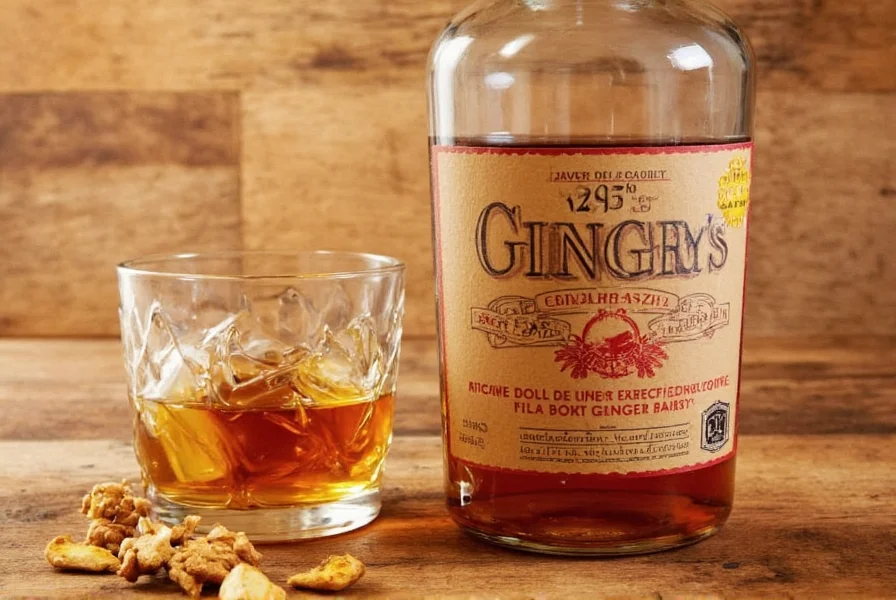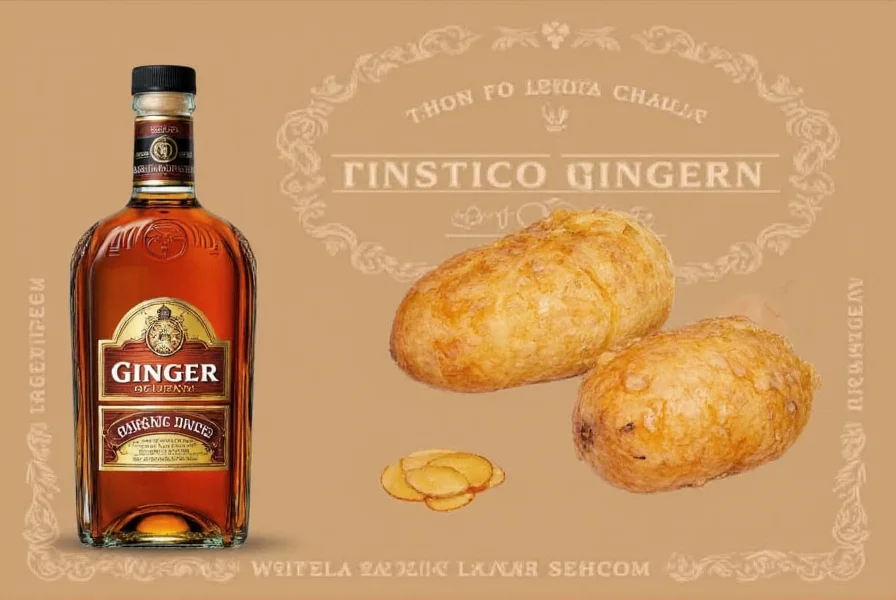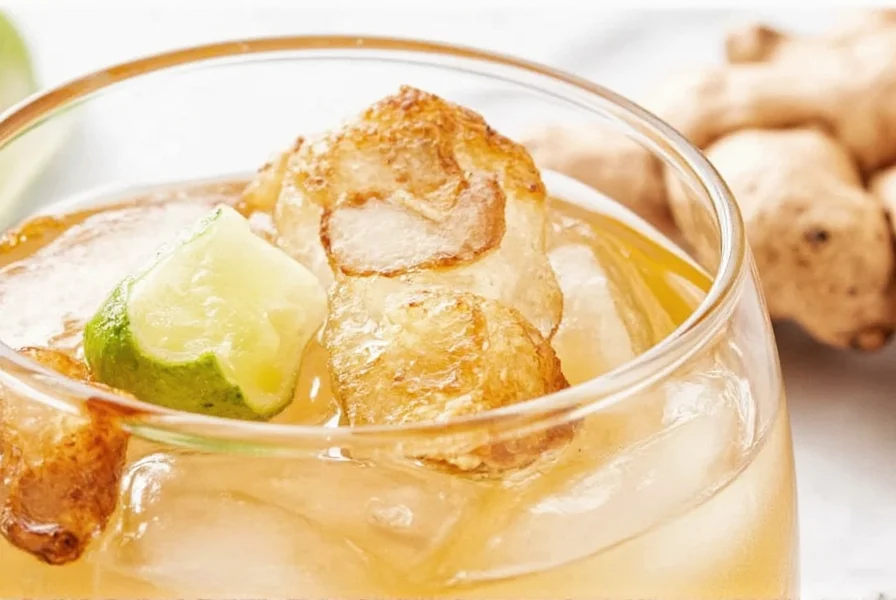Ginger brandy represents a fascinating intersection of traditional distillation techniques and bold flavor innovation. This spirit has gained popularity among cocktail enthusiasts and spirit connoisseurs seeking something beyond standard brandy offerings. The infusion process preserves brandy's fundamental qualities while introducing ginger's vibrant spiciness, creating a versatile spirit suitable for sipping or mixing.
The Origins and History of Ginger Brandy
Ginger brandy's history traces back to 18th century Europe when explorers returned from Asia with ginger, a highly prized spice. Early versions emerged as medicinal tonics, with apothecaries combining brandy's preservative qualities with ginger's digestive benefits. By the 19th century, commercial producers began crafting ginger brandy as both a digestive aid and social beverage, particularly popular in British and French households.

How Ginger Brandy Is Made
The production process for ginger brandy involves several precise steps that determine its final character. Most commercial producers start with a high-quality grape-based brandy as their base spirit. Fresh ginger root is peeled, sliced, and either steeped directly in the brandy or distilled together in small batches. The infusion period typically ranges from several days to weeks, depending on the desired intensity.
Some artisanal producers use a double-infusion method, first creating a ginger extract and then carefully blending it with aged brandy. The best ginger brandy maintains a delicate balance—allowing the ginger's spicy warmth to complement rather than overwhelm the underlying brandy's fruit and oak characteristics. Quality producers avoid artificial flavorings or excessive sweeteners that would compromise the spirit's integrity.
Ginger Brandy Flavor Profile Characteristics
Understanding what is ginger brandy requires examining its distinctive sensory profile. When properly crafted, it offers:
| Characteristic | Description |
|---|---|
| Appearance | Clear to golden amber, depending on base brandy and aging |
| Aroma | Prominent ginger spice with underlying fruit notes from brandy |
| Taste | Initial sweetness followed by ginger's warming spice and brandy's complexity |
| Mouthfeel | Smooth with subtle heat from ginger, moderate viscosity |
| Finish | Warming ginger spice with lingering fruit notes |
Ginger Brandy vs Ginger Liqueur: Key Differences
Many consumers confuse ginger brandy with ginger liqueur, but significant distinctions exist between these two products. Ginger brandy maintains the higher alcohol content typical of brandy (35-40% ABV), while ginger liqueur usually ranges from 20-30% ABV. The production method differs substantially—ginger brandy starts with brandy as its base, whereas ginger liqueur often begins with neutral spirits.
Sweetness levels provide another clear differentiator. Ginger liqueur typically contains significantly more sugar, creating a syrupy texture designed primarily for mixing. In contrast, quality ginger brandy contains minimal added sugar, preserving the spirit's dry character while allowing ginger's natural flavors to shine through. This makes ginger brandy more versatile for both sipping and cocktail applications.
How to Drink Ginger Brandy: Serving Recommendations
Experiencing ginger brandy at its best requires proper serving techniques. For straight consumption, serve at room temperature in a snifter or tulip glass to concentrate the aromas. The ideal serving size is 1.5-2 ounces, allowing the complex flavors to develop as it warms slightly in the glass.
For those new to ginger brandy, serving it slightly chilled (but not on ice) can make the ginger's spiciness more approachable. Some enthusiasts prefer adding a single large ice cube to gradually mellow the spirit as it melts. The best way to store ginger brandy is in a cool, dark place with the bottle upright—unopened bottles maintain quality for years, while opened bottles should be consumed within 1-2 years for optimal flavor.

Creative Ginger Brandy Cocktail Applications
Ginger brandy's versatility shines in cocktail applications where its distinctive flavor can enhance rather than dominate. Here are three exceptional ginger brandy cocktail recipes that showcase its range:
The Spiced Autumn
Combine 2 oz ginger brandy, 0.5 oz fresh lemon juice, 0.5 oz honey syrup (1:1 honey to water), and 2 dashes aromatic bitters in a shaker with ice. Shake vigorously and strain into a chilled coupe glass. Garnish with a thin lemon wheel and candied ginger.
Ginger Brandy Sour
Shake 2 oz ginger brandy, 0.75 oz fresh lemon juice, 0.5 oz simple syrup, and 1 egg white with ice until frothy. Double strain into a rocks glass over a large ice cube. Express orange oil over the drink and garnish with a lemon twist.
Modern Sidecar
Stir 1.5 oz ginger brandy, 0.75 oz Cointreau, and 0.75 oz fresh lemon juice with ice until well-chilled. Strain into a coupe glass rimmed with sugar. Garnish with a thin slice of crystallized ginger.
Homemade Ginger Brandy Production
Crafting homemade ginger brandy allows for complete control over flavor intensity and quality. Start with 750ml of good quality brandy (XO or VSOP works well) and 4-6 ounces of fresh ginger, peeled and thinly sliced. Combine in a glass jar, seal tightly, and store in a cool, dark place.
Shake the mixture daily and taste after 3 days. Most home producers find optimal flavor between 5-10 days of infusion, depending on ginger freshness and desired intensity. Once the desired strength is reached, strain through a fine mesh sieve, then through cheesecloth to remove any sediment. For a smoother product, some add a small amount of simple syrup (1-2 tablespoons per 750ml), though traditionalists prefer it dry. Store your homemade ginger brandy in a clean glass bottle away from light.
Quality Indicators for Premium Ginger Brandy
When selecting ginger brandy, several quality indicators distinguish superior products. First, check the ingredient list—authentic ginger brandy should contain only brandy and ginger (plus possibly minimal sweetener). Avoid products listing artificial flavors, colors, or excessive sugar. The spirit should have a natural golden hue rather than an unnaturally bright color.
Smell the product before purchasing if possible—the aroma should feature balanced ginger spice with underlying brandy notes, not an overwhelming artificial ginger scent. Price can be an indicator, as quality ginger brandy requires time and quality base ingredients, typically costing $25-45 for a 750ml bottle. Reputable producers often provide information about their ginger sourcing and production methods, demonstrating transparency about their craft.
Conclusion: The Enduring Appeal of Ginger Brandy
Ginger brandy represents a sophisticated evolution of traditional spirits, offering a distinctive flavor experience that bridges the gap between classic brandy and contemporary cocktail culture. Its versatility makes it equally suitable as a contemplative after-dinner drink or as the foundation for innovative cocktails. As craft distillation continues to grow globally, we're seeing renewed interest in this historic spirit, with modern producers refining traditional methods while respecting ginger brandy's heritage. Whether enjoyed neat, with a splash of water, or as the star ingredient in a carefully crafted cocktail, ginger brandy delivers a uniquely satisfying drinking experience that continues to captivate spirit enthusiasts worldwide.
Frequently Asked Questions
What's the difference between ginger brandy and ginger liqueur?
Ginger brandy maintains the higher alcohol content of traditional brandy (35-40% ABV) with minimal added sugar, while ginger liqueur typically has lower alcohol content (20-30% ABV) and significantly more sugar. Ginger brandy starts with brandy as its base, whereas ginger liqueur often begins with neutral spirits.
How should I store ginger brandy after opening?
Store opened ginger brandy upright in a cool, dark place away from direct sunlight or temperature fluctuations. Unlike wine, distilled spirits don't spoil quickly, but for optimal flavor, consume within 1-2 years after opening. Ensure the bottle is tightly sealed to prevent oxidation and evaporation.
Can I make ginger brandy at home?
Yes, you can easily make homemade ginger brandy by infusing quality brandy with fresh ginger slices. Use 4-6 ounces of peeled, thinly sliced ginger per 750ml bottle of brandy. Steep for 5-10 days, tasting periodically until desired intensity is reached, then strain and store in a clean bottle. The process requires no special equipment and allows customization of ginger intensity.
What cocktails work best with ginger brandy?
Ginger brandy excels in sour-style cocktails, modern takes on classic brandy drinks, and autumnal cocktails. It works particularly well in variations of the Sidecar, Whiskey Sour, and Champagne cocktails. Its spicy warmth complements citrus juices, honey syrups, and aromatic bitters, making it versatile for both shaken and stirred preparations.
Does ginger brandy have digestive benefits?
While not a medical treatment, ginger brandy combines brandy's traditional role as a digestif with ginger's well-documented digestive properties. The ginger content may help soothe the stomach and aid digestion, which is why it has historically been served after meals. However, these effects are modest and should not be considered a substitute for medical treatment.











 浙公网安备
33010002000092号
浙公网安备
33010002000092号 浙B2-20120091-4
浙B2-20120091-4